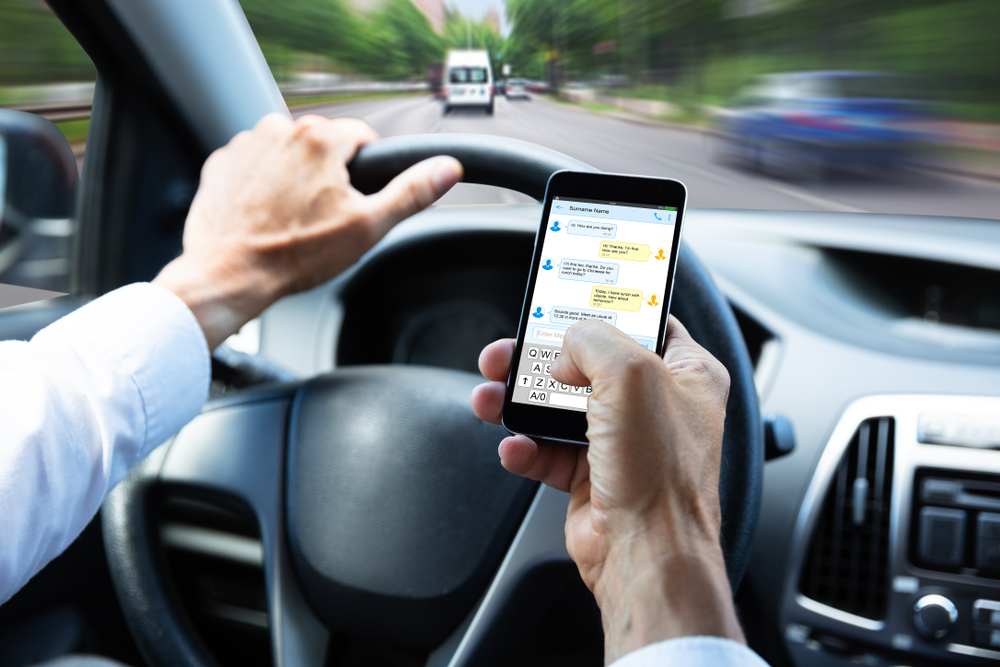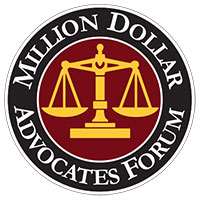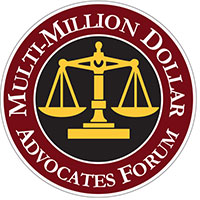Are We All Guilty of Distracted Driving? Common causes of car crashes in Los Angeles
The phrase “distracted driving” undoubtedly brings to mind drivers texting, talking on cell phones, browsing social media and playing mobile games. It’s no surprise that talk of distracted driving calls up those images: mobile devices are the subject of both widespread legislation and several extensive public service information campaigns. However, there are many other possible distractions on the road, some just as dangerous as the use of cell phones and other mobile devices.
Types of Distracted Driving
Some types of distracted driving get a lot of attention. Others may come as a complete shock and make you wonder who would take such a risk behind the wheel. But, there’s a third category, too: things you probably do yourself without even considering the risk.
Some examples of behaviors that cause car accidents:
• Talking on a cell phone
• Texting or posting to social media
• Playing games on a mobile device
• Watching videos or movies
• Selecting music
• Reading email
• Programming your GPS
• Looking at a map
• Eating
• Drinking coffee
• Putting on make-up
• Smoking
• Turning to talk to a child in the back seat
• Rubbernecking
Of course, this is only a partial list. Any activity that diverts the driver’s attention from the road and the environment can be a dangerous distraction.
Dashboard Devices and Distracted Driving
In theory, new, state-of-the-art vehicles should contain features that make driving safer for both the driver and others on the road. And, many such advancements are incorporated into the newest-model cars and trucks. However, a recent report from the AAA Foundation for Traffic Safety suggests that modern dashboard devices have the opposite effect. The study determined that using voice-activated and touch-screen features built into the vehicle mentally and visually distracts drivers for 40 seconds or more.
While 40 seconds may sound negligible, consider the distance covered during that time. At 60 miles per hour on the interstate, a 40-second distraction will last for 2/3 of a mile, or nearly 3,500 feet. On a residential street, at 30 miles per hour, the driver’s attention is diverted for about 1/3 of a mile, or more than a city block. Then, imagine the opportunities for motor vehicle accidents—and worse—that can arise in that distance. That’s plenty of time not to notice:
• A vehicle swerving into your lane
• Traffic slowing or stopping in front of you
• An unexpected lane closing
• An obstacle in the road
• An object rolling or blowing into the road
• A person crossing the street
• A child running out between cars
• An unexpected stop sign
• Another vehicle passing through an intersection
• A car pulling out of a driveway
• An animal in the road
These features are in hot demand among purchasers of new vehicles in 2017, in part because drivers believe that they are safer. In fact, the National Safety Council says 80% of drivers mistakenly believe that hands-free devices are safer. But, more than 30 studies have shown that they aren’t: the mental distraction associated with using a hands-free device is just as significant. Drivers talking on either handheld or hands free devices fail to see 50% of their surroundings.
California car and truck accident Statistics
According to the California Office of Traffic Safety (OTS), 80% of motor vehicle crashes involve some sort of driver inattention. And, the National Highway Traffic Safety Administration (NHTSA) has calculated that a texting driver has a crash risk 23 times as high as a non-distracted driver. That’s no surprise when you consider that the average text message takes the driver’s attention away from the road for five seconds, while the average emergency situation requires a response within two seconds.
At 55 miles per hour, the five seconds in which the driver has turned his or her eyes from the road is enough for the vehicle to cover the distance of a football field.
California Drivers Text and Drive leading to serious car accident injuries
61% of drivers who responded to the 2014 California Traffic Safety Survey said that they had been hit or nearly hit by a driver who was texting or talking on a cell phone. This recognition of the danger, however, doesn’t deter most drivers from their own distractions. 53% of respondents to the same survey admitted to having made driving errors while using their cell phones.
California Distracted Driving Prevention
California, like most U.S. states, has taken measures to protect California drivers, passengers, pedestrians, bicyclists, and others from the dangers of distracted driving. One key measure is a new law, which took effect in January of 2017.
The new legislation prohibits the use of most hand-held devices, and comes in response to a significant number of motor vehicle accidents associated with such devices. In 2015, California saw 12 fatal automobile accidents, 500 personal injury accidents and 700 property damage collisions involving drivers using hand-held devices. Violation of the law will result in a $20 fine for a first offense and a $50 fine for a second or subsequent offense.
While this legislation is a step in the right direction, the data above shows that it is insufficient to protect against distracted driving accidents. Responsible drivers must take measures to minimize or eliminate all distractions, including those from passengers, routine activities like drinking coffee, and hands-free devices as well as those prohibited by law.
Legal Responsibility for a Distracted Driving Accident
Although a distraction may occasionally occur through an outside event or the actions of another person, the vast majority of distraction driving accidents occur when the driver chooses to turn his or her attention away from the task at hand. When a driver makes that choice and puts others on the road at risk because he opts to flip through CDs, dial a phone number, read a social media post or otherwise prioritize another activity over his responsibility to operate the vehicle safely, he is negligent.
In general, a negligent driver is responsible to those who suffer losses as a result of his negligence. Those losses, commonly referred to as “damages,” may include medical expenses, lost income, pain and suffering, property damage and more.
Additional Party Liability in Distracted Driving Cases
While the distracted driver will typically bear primary responsibility for damages caused by the accident, third parties may sometimes share responsibility. Some examples include:
• When the distracted driver was operating the vehicle in the course of his employment, his employer may be liable for his negligence
• When a passenger negligently, recklessly, or intentionally caused the driver’s distraction, he or she may be partially or fully responsible for damages
If you’ve been injured in an accident caused by a distracted driver, call our experienced personal injury attorneys as soon as possible. We will be able to help you assess who may be legally responsible for your injuries, property damage and other losses. We can also advise you as to any applicable deadlines and requirements, protect against pressure or misinformation from the insurance company, and gather the evidence necessary to build a case on your behalf. No one should suffer due to the negligence of someone else. Call our office today or complete the contact form on our website to set up your free consultation.










